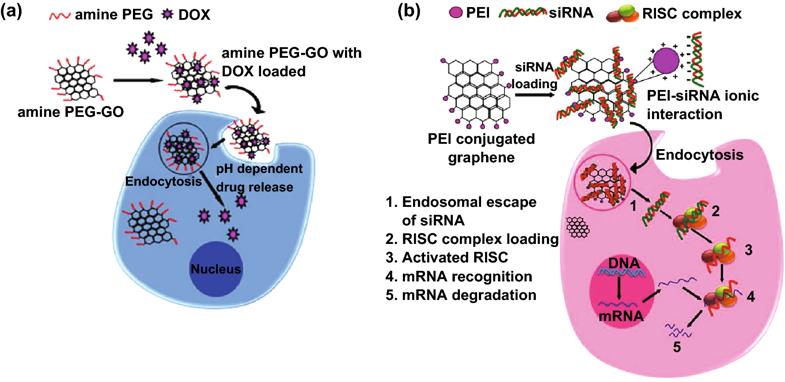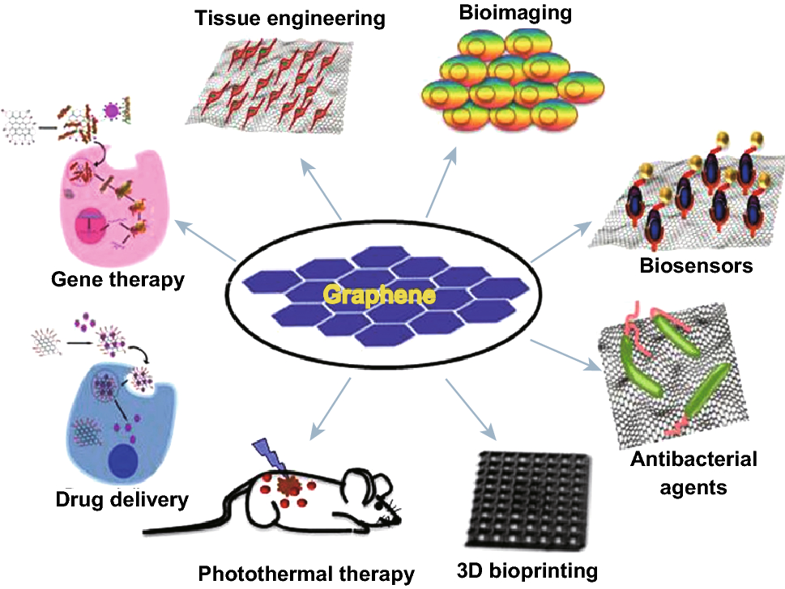India: Scientists Explore the Miracle—and Toxicity—of Graphene in 3D Printing and Biomedical Applications
While hardware, software, and a variety of design mechanisms are critical to 3D printing, materials science lies at the heart of this progressive technology, continuing to infiltrate the mainstream today. 3D printing with metal and carbon fiber is especially popular now, and has become more affordable and accessible to everyone, while initially being restricted to industrial companies with greater financial resources and research capabilities. Graphene, sometimes referred to as a ‘semi-metal’ has been touted as a material full of miraculous capabilities due to its ultra-light weight and incredible strength—far surpassing that of a diamond or even steel. Could this material become more mainstream as well? If so, would that be a good thing?
Now, two researchers from India have published findings in ‘Comprehensive Application of Graphene: Emphasis on Biomedical Concerns,’ exploring the use of graphene in 3D printing along with the potential for toxicity upon exposure to cells. One of the unique qualities of graphene is that it is a 2D structure that is incredibly strong, stiff and has exciting qualities such as conductivity. There are concerns regarding its safety when used in biomedical applications such as creating scaffolding to encourage live cell growth or use in drug delivery, bioimaging, and even biosensing.
Synthesis of this unique material occurs through either the top-down or bottom-up method, respectively using chemical ablation, electrochemical oxidation, or plasma treatment—or building upward with sizeable sheets of graphene. And as the scientists for this recent review point out, graphene oxide (GO) is considered most pliable for biomedical use—along with RGO, which is a less oxidized form—with both allowing for better water solubility.
“Preparation of stable dispersions of graphene remains an unsolved problem because of its hydrophobic nature,” state the researchers. “This can be achieved by sonicating graphene suspension for several hours and also by using surfactants or polymers.”
Researchers over time have explored with a variety of solvents, but again this elevates the potential for toxicity which is why there is now a trend toward greener, purer ways of creating quality sheets of graphene, such as those employing high speed, shear mixing techniques without the need for chemicals that could be toxic. Continued studies are important in this area because of the incredible potential for graphene in biomedical applications, again applying to drug delivery, to include genes and proteins, along with graphene substrates as biosensors, anti-microbial agents, and tissue engineering.
“The overwhelming properties of GO that support its clinical use are the amphiphilicity, surface functionality, fluorescence quenching ability, and surface-enhanced Raman scattering property. The hydrophobic nature, large surface area, ripples, and grain boundaries on defective sites of graphene are important factors when considering them for biomedical use,” states the research team.
Along with this study/review, the scientists have also realized that 3D printing and graphene are enormously suited to one another in a complementary fashion, with graphene also working to enhance polymer materials (especially in biomedical applications) so often used within this continually evolving technology:
“… with the help of 3D printing, an array of biomaterials can be tuned to obtain desirable properties and multiple functionalities for complex tissue engineering applications as well as to fabricate surgery-friendly constructs.”
There is still great concern about how graphene will mix with biological structures, however, and the researchers listed numerous factors that could be influential regarding interaction, to include:
- Size and shape of cells
- Lateral dimension
- Surface chemistry
- Impurities
- Agglomeration
“The physical interaction between graphene and a cell membrane is considered to be the main mechanism of graphene-induced toxicity,” state the researchers. “The sharp edges of a graphene sheet cause damage on the cell membrane, resulting in leakage of the intracellular contents. In addition, both GO and RGO are known to induce cytotoxicity, oxidative stress, and DNA damage in mammalian cells.”
While the researchers see a bright future for the use of graphene in many different applications, to include that of the biomedical industry, there are still obvious—and major—hurdles to overcome regarding toxicity to the humans that scientists and medical professionals are trying to help.
“Graphene is included in the list of hazardous materials by the European Scientific Committee on Emerging and Newly Identified Health Risks. There are still many gaps to be filled, considering the toxic potential of graphene. All physicochemical parameters including the size, shape, agglomeration, layer thickness, lateral dimension, and atomic composition should be considered while evaluating the toxicity. From a biological perspective, the effect of concentration, duration, route of exposure, and presence of impurities should be thoroughly investigated,” stated the authors.
“In conclusion, graphene promises an exciting nanoplatform for biomedical applications, yet there are many questions that need to be addressed. It is recommended that graphene derivatives should undergo extensive safety evaluations or validations before considering them safe for biomedical applications or clinical use.”
What do you think of this news? Let us know your thoughts! Join the discussion of this and other 3D printing topics at 3DPrintBoard.com.
[Source / Images: Springer Link]
Drug and gene delivery applications. a) Delivery of doxorubicin using amine-PEG-functionalized GO. b) siRNA delivery and mRNA degradation using PEI-conjugated GO for gene silencing technology (RISC—RNA-induced silencing complex).
Subscribe to Our Email Newsletter
Stay up-to-date on all the latest news from the 3D printing industry and receive information and offers from third party vendors.
You May Also Like
Gorilla Sports GE’s First 3D Printed Titanium Cast
How do you help a gorilla with a broken arm? Sounds like the start of a bad joke a zookeeper might tell, but it’s an actual dilemma recently faced by...
Nylon 3D Printed Parts Made More Functional with Coatings & Colors
Parts 3D printed from polyamide (PA, Nylon) 12 using powder bed fusion (PBF) are a mainstay in the additive manufacturing (AM) industry. While post-finishing processes have improved the porosity of...
$25M to Back Sintavia’s Largest Expansion of Metal 3D Printing Capacity Since 2019
Sintavia, the digital manufacturing company specializing in mission-critical parts for strategic sectors, announced a $25 million investment to increase its production capacity, the largest expansion to its operations since 2019....
Velo3D Initiates Public Offering in a Bid to Strengthen Financial Foundations and Drive Future Growth
Velo3D (NYSE: VLD) has been among a number of publicly traded 3D printing firms that have attempted to weather the current macroeconomic climate. After posting a challenging financial report for 2023,...

































